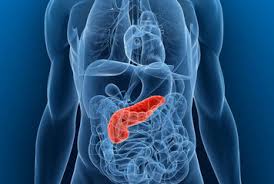Contact: Catherine Kolf
ckolf@jhmi.edu
410-287-2251
Johns Hopkins Medicine
Singapore - A team of international researchers from Duke-NUS Graduate Medical School Singapore and the Johns Hopkins University School of Medicine (USA) has identified a self-perpetuating signaling circuit inside connective tissue cells that allows these cells to form a front and a back and propel themselves in a particular direction over a long period of time. This propulsion is the same movement that tumor cells use to invade healthy tissue during cancer metastasis so cracking the code to this signaling network may lead to new therapeutic strategies against cancer and other devastating diseases.
 Many different types of cells in our body can crawl and migrate to distinct locations, sometimes over long distances. Immune system cells, for example, move to a wound site to kill microorganisms during an infection, and connective tissue cells (fibroblasts) move there to repair damaged areas. Cell migration is essential to a variety of biological processes, such as the development of an organism, wound healing, and immune surveillance, but also the invasion of tumor cells during cancer metastasis.
Many different types of cells in our body can crawl and migrate to distinct locations, sometimes over long distances. Immune system cells, for example, move to a wound site to kill microorganisms during an infection, and connective tissue cells (fibroblasts) move there to repair damaged areas. Cell migration is essential to a variety of biological processes, such as the development of an organism, wound healing, and immune surveillance, but also the invasion of tumor cells during cancer metastasis.
Cell migration is an extraordinarily complex process which depends on the ability of a cell to form a front and a back (called polarization) and generate force in one preferred direction. Migrating cells are able to do this spontaneously, without assistance from the environment. How they do this is a question that has kept cell biologists busy for the last three decades.
These latest results shed light on the migratory mechanism of cells. In particular, the team found that the signaling network involved has an interesting property, well known to engineers and bankers: it is self-perpetuating. A classic analogy to this type of circuit is a bank run, which occurs when a large number of customers withdraw their money from a bank due to concerns about the bank's solvency. As more people withdraw their funds, the probability of default increases, prompting more people to withdraw their money, in a kind of self-fulfilling prophecy (or positive feedback loop).
The team went on to show that this positive feedback circuit is switched on in very specific regions in the connective tissue cells, causing proteins to push against only one side of the outer envelope of the cell, eventually causing movement in one preferred direction. Predictably, two important protein components of this signaling circuit, called Ras and PI3K, are often mutated in cancer. This suggests that misregulation of this circuit may increase the invasiveness of cancer cells. It also highlights the need to understand how signaling proteins interact with each other inside cells, hopefully leading one day to new therapies for cancer and other deadly diseases.
This study, entitled "The small GTPase HRas shapes local PI3K signals through positive feedback and regulates persistent membrane extension in migrating fibroblasts" was published online in Molecular Biology of the Cellon May 15. It is supported by a grant from the Ministry of Education.
No comments:
Post a Comment